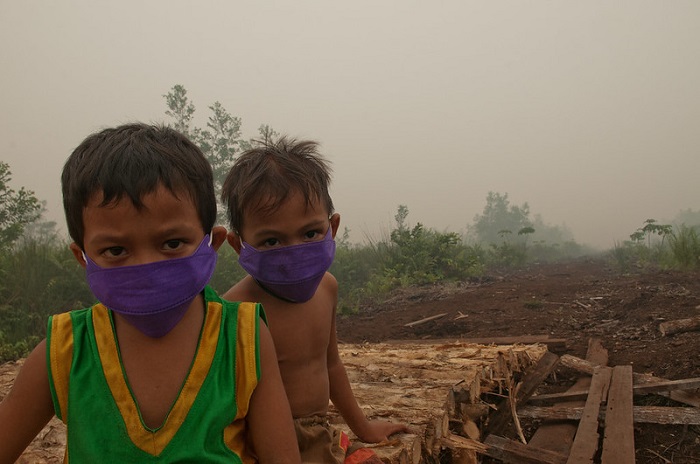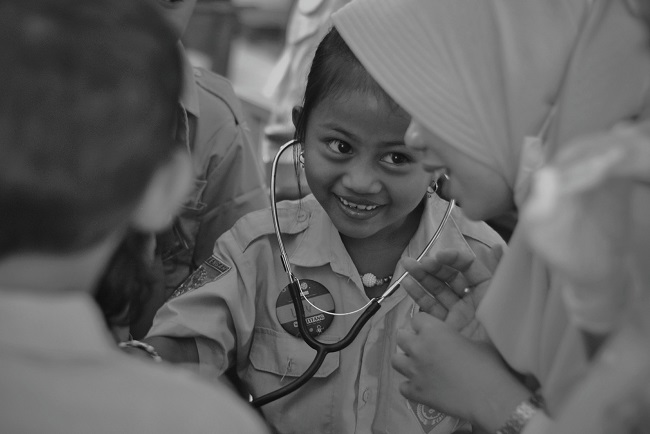Firman Witoelar and Ariane Utomo
Kesehatan nomor satu! Health is number one! So goes the saying we have often heard from President Joko Widodo since the onset of the COVID-19 pandemic in early 2020. Since then, Indonesia has gone from being at the epicentre of the COVID-19 pandemic in mid-2021, to surpassing the 70 per cent threshold of first-dose COVID-19 vaccinations (and 96 per cent of the target population) in early 2022, despite forecasts it would fail to do so.
Fast forward to mid-November 2022 and the G20 Summit hosted by Indonesia in Bali. The Pandemic Fund, a revamped version of the Financial Intermediary Fund for Pandemic, Preparedness, and Response, was launched by President Widodo, together with the head of the World Health Organisation, World Bank and representatives of several countries. The most important change to the original iteration of the Fund might be reform of its governance structure, which will be more inclusive and provide a larger role for low-and-medium income countries. The Fund’s board will be co-chaired by former Indonesian Finance Minister Chatib Basri and Rwanda’s Health Minister Daniel Ngamije. In just over a year, Indonesia had emerged from the depths of the pandemic to assuming a leading role in the global health architecture.
To understand the complexity of Indonesia’s health system requires taking the good news together with the bad. On the eve of the G20, in October 2022, an investigation was launched into the deaths of more than a hundred children due to acute kidney failure, linked to a number of over-the-counter cough syrups. These cases once again put a spotlight on the role of the Health Ministry and the Food and Drug Supervisory Agency (BPOM). Over the past few years, the prolonged and still evolving complexities of the COVID-19 pandemic and the corresponding responses and initiatives from government and its agencies, have presented significant challenges to public health, further highlighting Indonesia’s long and tenuous pursuit of delivering healthcare for all its people.
How has this quest for longer and healthier lives for all Indonesians unfolded in the past and present, and what does it signal for the future? These questions are addressed in a book we have edited titled In Sickness and In Health: Diagnosing Indonesia, published by ISEAS Publishing (2022). The book includes 12 chapters drawn from the 2021 ANU Indonesia Update conference on health transition in Indonesia. As guest editors of this edition of Inside Indonesia, we have selected four key contributions from the book and presented them in shortened form here.
Focusing on the ongoing efforts around health policy reforms, Andrew Rosser, Lucky Djani, Wahyudi M. Tohar, and Fahmy Badoh examine the present-day obstacles to realising the right to health in Indonesia. Aliza Hunt, Hans Pols and Sandersan Onie highlights key challenges to Indonesia’s mental health care system, which surprisingly had once been a model in the region. Amplifying the calls for more inclusive and equitable access to health care, I Nyoman Sutarsa draws from his extensive field research on trans women and HIV care in Bali. Through a case study of maternal health provisions in East Nusa Tenggara, Salut Muhidin examines the challenge of addressing Indonesia’s maternal mortality rate, which has been stubbornly high compared to countries of similar standing in region.
The following is an extract from Chapter One, Diagnosing Indonesia, Singapore, ISEAS Publishing, 2022.
Canvassing health transition in Indonesia
In 1950, about 189 out of 1,000 babies born alive in Indonesia would not have survived past their first birthday. Such a high infant mortality rate overwhelmingly contributed to the population’s low life expectancy for the newly independent nation at the time. Assuming the prevailing age-specific patterns of deaths, for the same year life expectancy at birth was estimated to be 39.4 years. By 2022, Indonesia’s infant mortality rate has fallen to 17.7 deaths per 1,000 live births, and life expectancy at birth has risen to 68.25 years.
If we go by these trends in infant mortality rate and life expectancy, the future trajectory for the general health and wellbeing of the average Indonesian is looking rosy. After all, the two indicators are meant to capture the underlying factors and contexts that shape the health of the nation. At the outset, gains in life expectancy—and correspondingly, the reduction in infant mortality rate—reflect a narrative of improvements in income per capita, living conditions, nutritional intake and education, as well as access to and quality of health care in recent decades. But focusing only on these two broad indicators may also obfuscate the complex history of Indonesia’s health transition, where wins are often coupled with setbacks, and where health-related innovations regularly intersect with novel conundrums.

What do we mean by health transition, and why do we often hear that Indonesia’s health transition has been marked by increasing complexity over time? The term health transition is often used interchangeably with epidemiologic transition. The latter was first conceptualised by Abdel Omran in 1971 to refer to the long-term shifts in the mix of diseases as people live longer through the course of economic development and social change. More specifically, Omran coined the term epidemiologic transition to describe ‘the complex change in patterns of health and disease and on the interactions between these patterns and their demographic, economic and sociological determinants and consequences’. In the first iteration of the epidemiologic transition theory, Omran proposed that there are three distinct stages in the transition: the age of pestilence and famine, the age of receding pandemics, and the age of degenerative and man-made diseases. Herein lies the basic premise of the epidemiologic transition theory: along with development and social change, the mortality and disease patterns in a particular geographic location would gradually shift from being dominated by infectious diseases (afflicting predominantly infants and young children) to chronic, non-communicable and degenerative diseases that tend to occur in older ages.
Over the years, there have been many critiques and iterations of and challenges to the epidemiologic transition theory. The re-emergence of infectious diseases and emergence of new infectious diseases such as HIV/AIDS and now COVID-19, is one of the more obvious challenges. Another glaring limitation is to do with how the original epidemiologic transition theory—like many other concepts in social science and public health—was largely drawn from a characterisation of what had happened in Western Europe and North America in the past.
In this book, we adopt a wider definition of health transition whereby the epidemiologic transition is a component in the overall transformation of the health profile of Indonesia as a nation. Frenk et al. (1991) conceptualised two broad components in health transition. The first is to do with the long-term shifts in the ‘patterns of diseases, disability and death’, and the second component refers to the shift in the ‘organised social response to health conditions’. The second component, for example, relates to factors such as the transformations in health care infrastructure and provisions.
Like the experience of many other middle- and lower-middle-income countries, Indonesia’s health transition is governed by multiple challenges, the first of which is to do with inequality. The history and nature of economic development in many developing countries is marked by deep socioeconomic inequalities, making patterns of health transitions across their diverse subpopulations incredibly complex. In the case of Indonesia, inequalities in access to and quality of health care are shaped not only by wealth inequalities, but also by longstanding regional inequalities. As shown in the chapter by Andre Meliala and Srimurni Rarasati in this book, Indonesia continues to struggle to address the unequal access to health infrastructure and health care professionals across its vast archipelago. Another challenge is the double burden of mortality and morbidity from infectious and non-communicable diseases. In Indonesia, and in other countries of similar economic standing, before the decline in mortality attributed to infectious diseases has reached low levels, mortality from non-communicable diseases is already on the rise.
This book aims to capture a slice of the complex story of how Indonesia’s quest for longer and healthier lives of its people has unfolded to date. The contributors of this edited collection are scholars, policymakers and expert practitioners who were invited to speak at the 2021 Indonesia Update—an annual conference hosted by the Indonesia Project of the Australian National University in Canberra, Australia, usually timed to take place during the southern hemisphere’s early spring. In the first quarter of 2021, we were optimistic that the pandemic would turn a corner, and that it was possible to hold a hybrid event by September 2021. We were wrong.
By July 2021, Indonesia had become the epicentre of the pandemic, and two large states in eastern Australia were deep in lockdown. The Delta variant drove record numbers of new COVID-19 cases and deaths in Indonesia. The health system was on the verge of collapse and cemeteries were overwhelmed with the sudden and excess demands for burials. This book came at a time where we—and the contributors of this volume—were ironically traversing the very setbacks and novel conundrums of a health transition. As we navigated our personal and collective grief and losses through the pandemic, the statistics, theories and challenges of health transition became all-consuming and too close for comfort. Indeed, the heavy toll from the COVID-19 pandemic has now been reflected in the estimated loss of roughly three years in the estimated life expectancy at birth in Indonesia, from 70.52 in 2019 to 67.57 in 2021. After the largest loss in life expectancy being recorded during the mass ‘anti-communist’ killings in the 1960s (estimated decline from 49.23 in 1964 to 42.60 years in 1965), this was the second-largest dip in life expectancy in the country’s post-independence demographic history.
An assessment of Indonesia’s health transition has been long overdue, even before COVID-19 came into the picture. The last time health transition was a major theme for the Update series was in 1996. The late Professor Gavin Jones and Professor Terry Hull—the convenors of the Update at the time—wrote in their introduction:
While the New Order government has given single-minded attention to reducing rates of population growth by reducing fertility, it has been less single-minded about reducing mortality. Vaccination campaigns have certainly been conducted with some enthusiasm, but budgetary figures reveal very low proportion of government budgets devoted to health by regional standards and an overemphasis on expensive curative facilities in the large cities at the expense of an effective system of primary health care and efficient referral. The results are clear in Indonesia’s greater success in reducing fertility than in reducing mortality. There is an urgent need to allocate more resources to health and improve the effectiveness in the health sector.
How has Indonesia traversed the path of health transition since then? Clearly much has changed, with some promising trends and new challenges emerging prior to COVID-19. Using estimates from the Global Burden of Disease project, Mboi et al. (2018) found that Indonesia’s life expectancy at birth had risen by about 8 years between 1990 to 2016. Such gain in life expectancy was relatively high to the average of 6.6 across comparable countries. In the same period, they further estimated that the total disability adjusted life years (DALYs) lost to communicable, maternal, neonatal and nutritional causes had significantly declined by 58.6 per cent. In contrast, total DALYs due to non-communicable diseases had risen. Six of the top ten causes of DALYs in 2016 were non-communicable diseases, up from three in 1990. In 2019, seven of the top ten diseases—including the top three of cardiovascular diseases, cancer, and diabetes and chronic kidney diseases—were non-communicable diseases.

While the increasing share and number of people with chronic non-communicable diseases in the population’s health profile is straining health system financing, Indonesia still faces serious problems associated more with countries at a lower level of development, such as child underweight and stunting, and neglected tropical diseases such as dengue. Furthermore, underneath the indicators of health outcomes that reflect progress at the aggregate level, the issues of geographical disparities persist. It is only recently that disability and mental health have become national health priorities.
Assessing the vulnerabilities of the health system
An observation frequently made since the COVID-19 pandemic is how the pandemic unmasked the vulnerabilities of a country’s health system. For Indonesia, and perhaps for some other countries, that observation may be misleading. Despite much progress in the health sector in the past few decades, the vulnerabilities of Indonesia’s health system were apparent even before the pandemic. For example, indicators of availability of physical infrastructure for health, such as the number of health facilities, remain below the World Health Organisation standards and the growth in the number of human resources for health (HRH) at all levels has not kept up with increasing need. There are large disparities between regions in terms of both quantity and quality of health infrastructure as well as HRH.
This book explores questions of how Indonesia’s quest for longer and healthier lives for its people has unfolded in the past and present, and what this means for the future. Drawing on the interdisciplinary expertise of our contributors, the chapters in this volume examine longstanding and emerging health challenges, and identify lessons learnt and opportunities for health system strengthening in the country. All contributors stress the immediate need for reliable and accessible data on health services, health financing, HRH, health supplies, and health surveillance data for formulating health policy and research. With several chapters examining the political dynamics that shape health policies and affect the supply side of the health system, we show how health transition is intrinsically situated within broader socioeconomic and political contexts. Discussions on how Indonesians navigate the barriers to access services as they come into contact with the health system underline the enduring problems of regional and socioeconomic inequalities, as well as persistent stigma and discrimination afflicting marginalised populations.
Firman Witoelar (firmanwitoelar.kartaadipoetra@anu.edu.au) is Fellow, Indonesia Project, Crawford School of Public Policy, College of Asia and the Pacific, Australian National University. Ariane Utomo (ariane.utomo@unimelb.edu.au) is a Senior Lecturer in Demography, School of Geography, Earth and Atmospheric Sciences, The University of Indonesia. The extract from Diagnosing Indonesia, Singapore: ISEAS, 2022 was reproduced here with permission.



